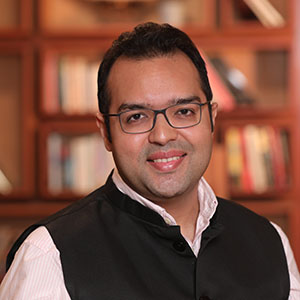Ask nonprofits in India about their biggest challenge and most will say it’s fundraising. That’s understandable given how much time and energy fundraising consumes—leaving leaders of nonprofits with little time to reflect on big picture issues such as strategy. But our experience shows that an unclear strategy is often at the root of fundraising challenges.
Through the Bridgespan Nonprofit Development Program,1 we’ve been fortunate to work with diverse nonprofits spanning grassroots organisations and large NGOs, with annual operating budgets of $30,000 to $30 million (INR 25 lakh to 250 crore), across sectors from climate to education. In this article, we share three lessons we’ve learned from our work helping more than 65 nonprofits achieve greater clarity about their intended impact and how to achieve that impact (what we call their theory of change).
Lesson 1: Prevent mission creep by resisting the temptation to chase funding
Many organisations that start laser-focused on their mission drift from it as new funding opportunities present themselves. It’s easy to get lured by funding for programmes that seemingly suit the organisation’s capabilities and have potential to help communities in important ways. Yet, these programmes may lead to a diversion of resources, resulting in fragmented efforts, suboptimal impact, and, ultimately, a dilution of the organisation's social purpose.
In contrast, organisations with strong mission focus never lose sight of their impact priorities. Moreover, a clear theory of change enables them to prioritise resource allocation toward activities that directly contribute to their mission. Declining funding opportunities not core to an organisation’s mission helps avoid tangential projects and potential mission creep.
For example, a nonprofit with the mission to solve hunger and nutrition problems provided mid-day meals to school children. It received a funding opportunity – equivalent to 25 percent of its annual operating budget – that it turned down because the opportunity was tied to educational programmes. Turning down that funding was nerve-wracking at first, but ultimately focused the organisation on the right investments and enhanced its long-term fundraising potential. The organisation has continued on its mission and created significant impact since declining this opportunity.
Lesson 2: Measure progress through realistic outcomes
There is no universal approach to goal setting: organisational goals vary significantly – especially in the choice of metrics, magnitude of change, and timelines for success. A field building organisation2 hoping to change public narratives and influence policy might approach setting impact goals very differently than a direct service organisation that hopes to help many households in a community. Organisations should think deeply about the progress they want to be held accountable for based on their model, approach, and stakeholders.
An organisation working to enhance the functioning of other actors in the field should avoid defining its goals at the population level. One nonprofit with a track record of working closely with communities on health care took stock of its impact goals just as it was starting to work with several state government health departments on programmes delivering public health care services. Following multiple discussions and reflection, the organisation settled on two key outcome goals suited to its field-building work: improving the efficiency and decision-making of state health departments. At the same time, for its pre-existing direct service work with communities, it continued to define its goals in terms of improved health outcomes for the households it reached.
Lesson 3: Allow adequate time to create and make choices
Achieving strategic clarity is not a sprint. In our experience, organisations that acquire deep clarity about their strategy are ones that take the time to discuss and reflect on strategic trade-offs as a team, often in multiple meetings spread over months. An ambitious strategy does not just mirror current work; nor is it a linear process. Strategy development can be messy, iterative, and laden with tough decisions. It’s okay, even helpful, to start with divergent thinking that yields multiple options for achieving strategic outcomes, and then converge on the most feasible ones based on potential risks and benefits, and alignment with a long-term vision and goals. This process of converging and making choices on important trade-offs is critical for organisations to achieve strategic clarity.
One organisation we worked with had ongoing after-school programmes aimed at enhancing the learning levels of students in public schools. In developing its theory of change, the organistion’s leadership team started with an expansive range of options for achieving its goals, from engaging parents with at-home learning tools to working with government education departments on teacher training programmes. After carefully evaluating the feasibility of all options and their fit with community needs, the organisation zeroed in on three strategic priorities: scaling after-school programmes, developing learning tools, and engaging parents and teachers on using these tools at-home and in-classrooms. By building in time for reflection and iteration over the course of a month and a half, the organisation surfaced the right priorities to advance its ambition while reducing the risk of spreading too thin.
Revisit Strategy Periodically
Strategy is not static. It is as dynamic as the environment in which it takes shape. That’s why it helps to take stock and revisit strategy every two to three years, making necessary course corrections to keep up with the ever-changing realities.
Strategic clarity, including the ability to say no, sets the foundation for successful fundraising. The nonprofit serving mid-day meals to children, which maintained clarity about its mission, has firsthand experience with this; its annual operating budget has increased tenfold since it declined funding tied to educational programmes.
We invite nonprofits to delve into these learnings, adapt lessons to organisational contexts, and chart out a course that leads to sustainable impact.




